Do you have a question about the Panasonic TX-P50G30E and is the answer not in the manual?
Covers handling, placement, and environmental precautions for safe operation and to prevent damage.
Instructions for cleaning TV components using soft cloths and mild detergent for regular and stubborn dirt.
Guidance on cleaning the mains plug with a dry cloth to prevent electrical hazards.
Lists items included with the TV, such as remote control, batteries, mains lead, and pedestal.
Details on optional accessories like Wireless LAN Adaptor and Communication Camera available for purchase.
Detailed explanation of each button and its function on the TV remote control.
Diagrams and instructions for connecting aerials, DVD recorders, VCRs, and mains lead.
Guide through the steps of auto setup: power, language, country, tuning mode, and starting the scan.
Instructions on turning on the TV, accessing the VIERA Connect interface, and basic navigation.
Covers turning on the TV, selecting modes, and finding channels via list, banner, or TV Guide.
Explains how to select modes, view the guide in landscape or portrait, and watch programmes.
Explains FLOF, TOP, and List modes, plus switching to teletext and selecting pages.
Guide on how to access and operate special features via the VIERA TOOLS function.
Instructions on displaying, selecting menus, items, and adjusting settings like colour balance and sharpness.
Step-by-step guide to retuning DVB-C channels using the auto setup function.
Covers selecting DVB modes, accessing tuning menus, and managing channels via favourites, list, and setup.
Instructions for tuning, skipping, and editing analogue channels through the channel list.
Guide to setting up reminders or recordings for TV programs using the timer function.
Instructions for setting up and managing channel/input locks using a PIN number.
Guide to labeling or skipping input terminals for easier identification and selection.
Steps to access and use Common Interface (CI) modules for encrypted channels.
Procedure to reset all TV settings to their original condition, including channels and picture settings.
Instructions for updating TV software automatically or manually for enhanced performance.
Guide to adjusting picture settings, selecting viewing modes, and locking specific settings.
Instructions for connecting, formatting, and setting up a USB HDD for recording TV programs.
Guide to accessing and playing media files from SD Card, USB Flash Memory, or USB HDD.
Information on DLNA, using a PC as a media server, and DLNA remote control functions.
Overview of VIERA Connect for accessing internet services and network contents.
Summary of Q-Link and VIERA Link features for connecting and controlling external equipment.
Illustrations showing recommended connections for recording, playback, satellite broadcasts, DVDs, and HDMI devices.
Covers aspect ratio control, auto mode, and supported input signals for optimal display.
Details on supported file formats, DivX, USB devices, HDMI/DVI connections, and USB peripherals.
Solutions for common problems like picture noise, no sound, connection issues, and recording errors.
Detailed technical data including power, dimensions, display, sound, connectivity, and operating conditions.
Lists trademarks, logos, and licensing information for various technologies and software used in the product.
Guidance on proper disposal of old equipment and batteries, plus Declaration of Conformity.
Covers handling, placement, and environmental precautions for safe operation and to prevent damage.
Instructions for cleaning TV components using soft cloths and mild detergent for regular and stubborn dirt.
Guidance on cleaning the mains plug with a dry cloth to prevent electrical hazards.
Lists items included with the TV, such as remote control, batteries, mains lead, and pedestal.
Details on optional accessories like Wireless LAN Adaptor and Communication Camera available for purchase.
Detailed explanation of each button and its function on the TV remote control.
Diagrams and instructions for connecting aerials, DVD recorders, VCRs, and mains lead.
Guide through the steps of auto setup: power, language, country, tuning mode, and starting the scan.
Instructions on turning on the TV, accessing the VIERA Connect interface, and basic navigation.
Covers turning on the TV, selecting modes, and finding channels via list, banner, or TV Guide.
Explains how to select modes, view the guide in landscape or portrait, and watch programmes.
Explains FLOF, TOP, and List modes, plus switching to teletext and selecting pages.
Guide on how to access and operate special features via the VIERA TOOLS function.
Instructions on displaying, selecting menus, items, and adjusting settings like colour balance and sharpness.
Step-by-step guide to retuning DVB-C channels using the auto setup function.
Covers selecting DVB modes, accessing tuning menus, and managing channels via favourites, list, and setup.
Instructions for tuning, skipping, and editing analogue channels through the channel list.
Guide to setting up reminders or recordings for TV programs using the timer function.
Instructions for setting up and managing channel/input locks using a PIN number.
Guide to labeling or skipping input terminals for easier identification and selection.
Steps to access and use Common Interface (CI) modules for encrypted channels.
Procedure to reset all TV settings to their original condition, including channels and picture settings.
Instructions for updating TV software automatically or manually for enhanced performance.
Guide to adjusting picture settings, selecting viewing modes, and locking specific settings.
Instructions for connecting, formatting, and setting up a USB HDD for recording TV programs.
Guide to accessing and playing media files from SD Card, USB Flash Memory, or USB HDD.
Information on DLNA, using a PC as a media server, and DLNA remote control functions.
Overview of VIERA Connect for accessing internet services and network contents.
Summary of Q-Link and VIERA Link features for connecting and controlling external equipment.
Illustrations showing recommended connections for recording, playback, satellite broadcasts, DVDs, and HDMI devices.
Covers aspect ratio control, auto mode, and supported input signals for optimal display.
Details on supported file formats, DivX, USB devices, HDMI/DVI connections, and USB peripherals.
Solutions for common problems like picture noise, no sound, connection issues, and recording errors.
Detailed technical data including power, dimensions, display, sound, connectivity, and operating conditions.
Lists trademarks, logos, and licensing information for various technologies and software used in the product.
Guidance on proper disposal of old equipment and batteries, plus Declaration of Conformity.
| Depth | 744 mm |
|---|---|
| Height | 70 mm |
| Weight | 26000 g |
| Pixel pitch | - mm |
| Audio system | Dolby Digital Plus, DolbyPulse, dts2.0, dts Digital Out |
| Picture mode | Dynamic / Normal / THX / Cinema / Game / Photo / Pro1 / Pro2 / ISFccc |
| Product color | Black |
| RMS rated power | 20 W |
| Display diagonal | 50 \ |
| Teletext function | Yes |
| Composite video in | 1 |
| Depth (with stand) | 779 mm |
| Display technology | Plasma |
| Power requirements | AC 220 - 240 V, 50/60Hz |
| Width (with stand) | 1204 mm |
| HDMI ports quantity | 4 |
| Height (with stand) | 335 mm |
| High frequency rate | 600 Hz |
| Weight (with stand) | 30000 g |
| USB 2.0 ports quantity | 3 |
| Compatible memory cards | SD |
| Contrast ratio (dynamic) | 5000000:1 |
| Annual energy consumption | 256 kWh |



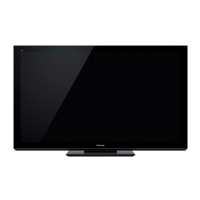
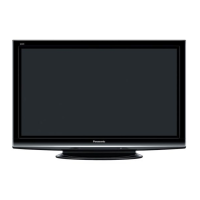


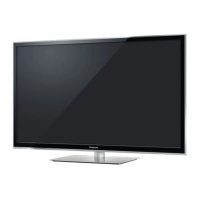
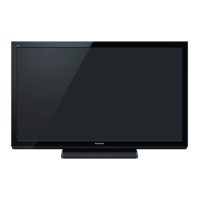

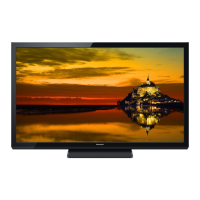
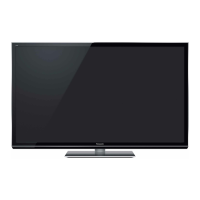
